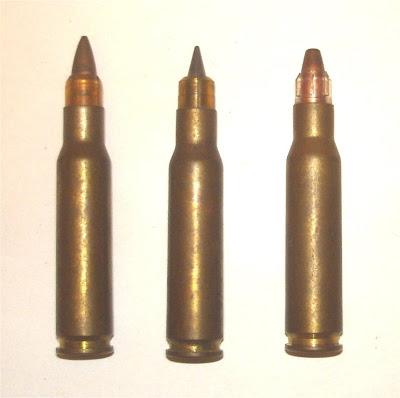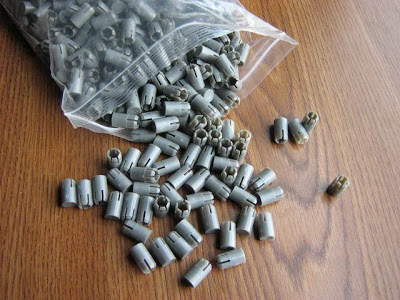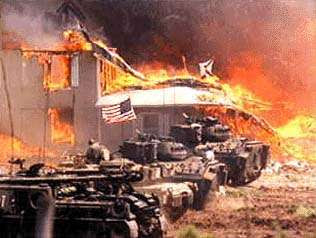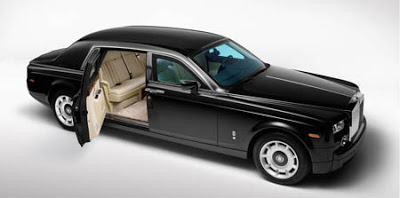
Good morning, boys and girls. Please ignore our vulgar pre-schooler in the front row. This morning we are going to talk about SLAP-ing your enemy. But before we do, you should be aware that this topic makes certain government officials very nervous. So much so that they have passed laws against some of what we are going to be discussing. As a disclaimer, you should know the following.
If you are NOT a Federal Firearms Licensee under the Gun Control Act of 1968 (i.e., you are an individual), it is permissable to own, sell, buy or shoot armor-piercing ammunition. It is NOT permissible to to MAKE AP ammo (18 USC sec. 922(a)(7)) or to IMPORT AP ammo (18 USC sec. 922(a)(7)).
The only persons who can make AP ammo are holders of a Type 10 FFL, also needed to make destructive devices, and ammunition for destructive devices. The only persons who can import AP ammo are holders of a type 11 FFL, who can also import DD's and ammo for DD's. The FFL's cost $1000 a year.
Also know that AP ammo is the bullets ONLY, not the loaded ammo, although ATF has identified some AP ammo by the loaded ammo, not projectiles, for the information of FFL dealers, who are not supposed to "willfully" transfer AP ammo. From this it follows that loading the bullets identified above intocompleted rounds does not constitute "making" AP ammo; making the bullets themselves does.
Now, aren't we all happier knowing that? Our subject today children is the Saboted Light Armor Penetrator, or SLAP cartridge.
 7.62 NATO SLAP Rounds
7.62 NATO SLAP RoundsSLAP ammunition is designed to penetrate armor more efficiently than standard armor piercing ammunition. The SLAP design incorporates a polymer sabot, which allows for the use of a tungsten penetrator projectile of a lesser diameter than the original bore.
These are sabots:

By using the casing of a large cartridge with a lightweight projectile, the velocity of the projectile is greatly increased. SLAP rounds are designed for use against lightly armored vehicles and aircraft. They make a perfect hash out of SAPI plates too, but more on that later.
Saboted rounds are used to get a flat trajectory (like Remington's Accelerator varmint rounds), or for armor penetration (APDS or SLAP ammo), or to use long, narrow projectiles stabilized by fins (APFDS or flechettes). The Accelerator was an effort to get flat shooting, small caliber performance from a .30 caliber cartridge by firing a 5.56mm soft point in a plastic sabot. Muzzle velocities are in the neighborhood of 4000 feet per second. As a varmint round, Accelerators are more expensive than regular ammo but no more accurate, although certainly the terminal ballistics are more, uh, spectacular.
It is when you substitute a tungsten steel penetrator for a soft tip bullet that things get really interesting. The U.S. military developed Saboted Light Armor Piercing rounds to get greater penetration from small arms. The 7.62mm SLAP round is designated the M948 and the SLAP tracer is M959. The .50 BMG round is designated as the M903(non-trace) and M962(trace). The SLAP family of ammunition is produced by the Winchester Cartridge Company and Olin Manufacturing. The sabot that contains the sub-caliber is manufactured by Cytec Industries.
The 7.62 NATO round has not been particularly successful in terms of accuracy. The Norwegians and the Swedes are reported to have done better in terms of precision sho placement. The main usage of 7.62 NATO SLAP rounds in U.S. service is in the Gatling gun type weapons where accuracy is less important. And the .50 caliber SLAPs are said to be much better than their smaller brothers.
So why, if the M948's are not as accurate should we care about them? Because they penetrate armor. The P-T-B have denied the American armed citizenry so-called destructive devices even as they cloak themselves in armor of various types. SLAP rounds, and other standard AP rounds, threaten that cocoon of safety they wrap themselves in. Most of us cannot afford a fifty caliber rifle. We CAN afford SLAP and other AP rounds.
I know a fellow who has obtained a number of M948 rounds (he found them at a gun show) and is busily pulling the projectiles and sabots and reloading them for his .300 Winchester Magnum bolt gun. Early reports are quite favorable, both as to accuracy and penetration. At one hundred yards, they went through a small SAPI plate like it wasn't even there. He is increasing the number of steel plates to see what kind of penetration on armor he can expect, but I doubt any Bradley or M113's fuel cell is immune from such treatment.
Why should we even worry about the ability to pierce armor? Because we know from past experience that the people designated to come and kill us may be riding in these:

And the people who send them ride in these:

'Nuff said?
Editorial Note: The photo originally used as the last illustration has been changed due to an allegation that it represented the President's new limo. As I am on record as discouraging Presidential assassinations in the strongest terms, the illustration has been changed to protect the innocent. And I don't mean Obama. I firmly believe he should live to see the end of his term. If it works out like we are afraid it will, he needs to stay alive for the war crimes tribunal, if nothing else. ;-)
9 comments:
A little birdie once told me that tungsten welding rod can be used to make an expedient penetrator for standard ball projectiles.
According to the bird, one simply uses a drill press to bore a straight-to-the-bullet's-axis hole in the base, then insert a proper-length section of tungsten rod.
Smear a dab of JB Weld on the base to ensure that the rod and projectile remain as one, let the JB Weld cure, then load per normal (after weighing the completed projo so that powder drop and ballistics can be calculated).
As with all loading information received from birds, your mileage (and exposure to the Evil Ones) may vary.
"Also know that AP ammo is the bullets ONLY, not the loaded ammo, although ATF has identified some AP ammo by the loaded ammo, not projectiles, for the information of FFL dealers, who are not supposed to "willfully" transfer AP ammo. From this it follows that loading the bullets identified above into completed rounds does not constitute "making" AP ammo; making the bullets themselves does".
We can expect this to change, and for the worst.
Dr. D
I'm researching a bit for a tale of fiction - but in order to make it seem a bit more authentic, does anyone here know where one would get the M948 bullets with sabots?
A little birdie told me it works better in a lathe than a drill press as far as getting the drilled hole consistently centered...Or maybe I dreamt it. I can't honestly recall. Might be a useful thought to other people who dream.
:-)
As for "anonymouse", I guess you should look into joining the military of the US or a friendly nation, befriending thieves that work on military bases, or consult international arms traders.
It'd add more adventure to your novel.
Didn't dad ever tell ya that sometimes you just have to do the legwork yourself?
If you happen to have a lathe in the garage it might be interesting to try turning bullets from something like bronze. Anyhoo, if you're making small quantities of special purpose ammo for militia use this is a very different proposition from making this kind of ammo on an industrial scale and making sure it's compatible with your military issue weapons. A bolt gun is just thing for specialty ammo. And some of the big game solids with extremely thick jackets in magnum calibres may well be up there with these types of rounds. During WW1, large bore double rifles were used thanks to their ability to punch through steel plate.
Copper alloys would work better for lathe turned bullets than bronze for one very important reason: Bronze is hell on bores by comparison. And if one were to hypothetically make a bi-metal with a penetrator core, it wouldn't make sense to clad it in a barrel destroying metal. How many barrels do you keep for each of your rifles?
Something to keep in mind. Bronze is harder than wrought iron.
The inaccuracy of saboted ammo comes from the sabot influencing the bullet shortly after leaving the barrel. Even the .50s are effected, they're not used at any significant range(IIRC, 400+ yards) because of this. Most "ball" ammo for the .50 is actually steel core though, and this have plenty of penetration. Another reason I"ve heard that .30 SLAP didn't take off is that it didn't seem to provide the results to justify the cost.
Sabots can be bought from reloading suppliers. Even plain ball put into a sabot will improve performance considerably. The .30 sabots can also be loaded in 7.62x25mm ammo, giving a nice punch to a pistol.
There are plenty of people though, that know how ot make carbide machien tools, and penetrators will not be very hard if one of them decides he needs to make them.
I recall an article about tests on tungsten ammunition carried out on mice. The tinest sliver of tungsten remaining in the body caused aggressive and rapidly spreading cancer. Just something to remember when choosing the core material.
that's because tungsten electrodes are radioactive. when welding TIG you have to grind them occasionally and i only know one guy who doesn't use breathing protection.
Post a Comment